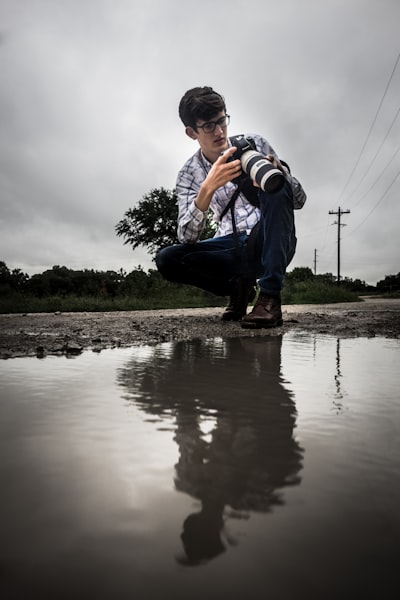The Deadly Reality of Texas River Floods: What Every Parent and Camp Organizer Needs to Know
The recent catastrophic flooding in Kerr County, Texas, has thrust the vulnerability of summer camps—especially those nestled near rivers—into the national spotlight. With 78 fatalities confirmed, including dozens of children and camp staff at Camp Mystic, parents and camp organizers across the U.S. are asking:
- Why are so many summer camps built by rivers?
- Could the Texas flood tragedy have been prevented?
- What must change to keep children safe amid climate-driven extreme weather?
Let’s explore the landscape of summer camp safety, flood mitigation, and the growing importance of climate resilience for families and communities.
Why Are So Many Camps Near Water? The Allure and the Risk
Rivers like the Guadalupe have long drawn families and youth camps thanks to their beauty, wildlife, and recreational opportunities. Activities such as canoeing, swimming, and kayaking are summer camp staples—but proximity to the water can quickly become a double-edged sword when storms strike.
Increasingly, communities in Texas and other parts of the U.S. are grappling with more intense and less predictable weather patterns. Short-notice floods, like the one that devastated Camp Mystic, underscore a critical tension: the tradition and charm of riverside camps versus the heightened risk from flash flooding.
Factors Influencing Camp Locations
- Historical value and tradition of waterfront summer camps
- Recreational opportunities (swimming, boating, fishing)
- Natural beauty and a promise of wholesome outdoor experiences
The Flip Side: Climate Change and ‘100-Year Flood Events’
- More intense storms and flash floods fueled by a warming climate
- Rising frequency of so-called ‘100-year flood events’ occurring every few years
- Hullabaloo over whether camps need to relocate or upgrade infrastructure
Are Camp Safety Regulations Keeping Pace with Extreme Weather?
Child safety at summer camps involves more than lifeguards and sunscreen. Regulatory frameworks often focus on medical care, supervision, and fire drills—while disaster preparedness for flash floods, tornadoes, and other extreme events may lag behind current realities.
Flood Safety Protocols: What Did and Didn’t Work in Texas
- Early warning systems (lacking or ineffective in some locations)
- Emergency evacuation plans (varying levels of preparedness)
- Staff training for disaster response (critical but sometimes under-resourced)
What Parents Should Ask Before Sending Kids to Camp
- How close is the camp to bodies of water?
- Does the camp have a written, practiced emergency evacuation plan?
- Are there flood early warning systems in place?
- How do staff communicate with parents in emergencies?
- What is the camp’s record on safety incidents?
How Can Summer Camps and Communities Adapt?
As family heartbreak spreads through affected Texas communities, the tragedy also serves as a catalyst for urgent problem-solving and debate. Here’s what experts and advocates are recommending:
- Relocating vulnerable cabins and facilities to higher ground
- Investing in modern flood detection and alarm systems
- Mandating regular disaster drills for staff and campers
- Stronger partnerships with local weather and emergency management authorities
Parents, meanwhile, can support these initiatives and demand improved transparency and safety protocols from camp administrators.
The Broader Picture: Youth Camps, Natural Disasters, and Coping With Loss
Tragic events like the Texas flood spark wider conversations about mental health, communal grief, and the changing face of childhood experiences in a warming world.
- How can families cope with loss and post-traumatic stress after a disaster?
- What resources exist for grief counseling in the wake of natural tragedies?
- How do we hold on to the magic of summer camp while protecting the next generation from growing extreme weather hazards?
Frequently Asked Questions (FAQ)
Q: Are floods at summer camps common?
A: Major, deadly floods at camps are rare, but as weather patterns change, experts warn that risk is growing, especially in historically flood-prone areas.
Q: What should parents look for in a camp’s emergency plan?
A: Look for clear procedures, alarms/warnings for rapidly rising water, practiced evacuation routes, and protocols for staff-parent communication.
Q: Can technology help prevent future camp disasters?
A: Yes. Advanced flood monitoring, weather prediction tools, and real-time alerts can provide critical minutes for evacuation.
Q: How are camps regulated when it comes to natural disaster preparedness?
A: Requirements vary state to state. Many advocates are calling for uniform, stronger standards.
Final Thoughts: Toward A Safer Future for Summer Camps
Texas’ devastation is a harsh reminder that even the most cherished traditions must adapt in the face of climate risks. As families mourn, the hope is that new conversations about location, regulation, and resilience will lead to meaningful change—so that the joys of camping can be safely shared, even as the environment evolves.
Further Reading:
- American Camp Association: Crisis Management Resources
- Texas Department of State Health Services: Youth Camp Licensing
- NOAA Flood Safety Tips
If you’re planning to send your child to a summer camp, now is the time to ask tough questions and demand up-to-date safety assurances—because nothing is more precious than peace of mind.

Comments
No comments yet. Be the first to comment!